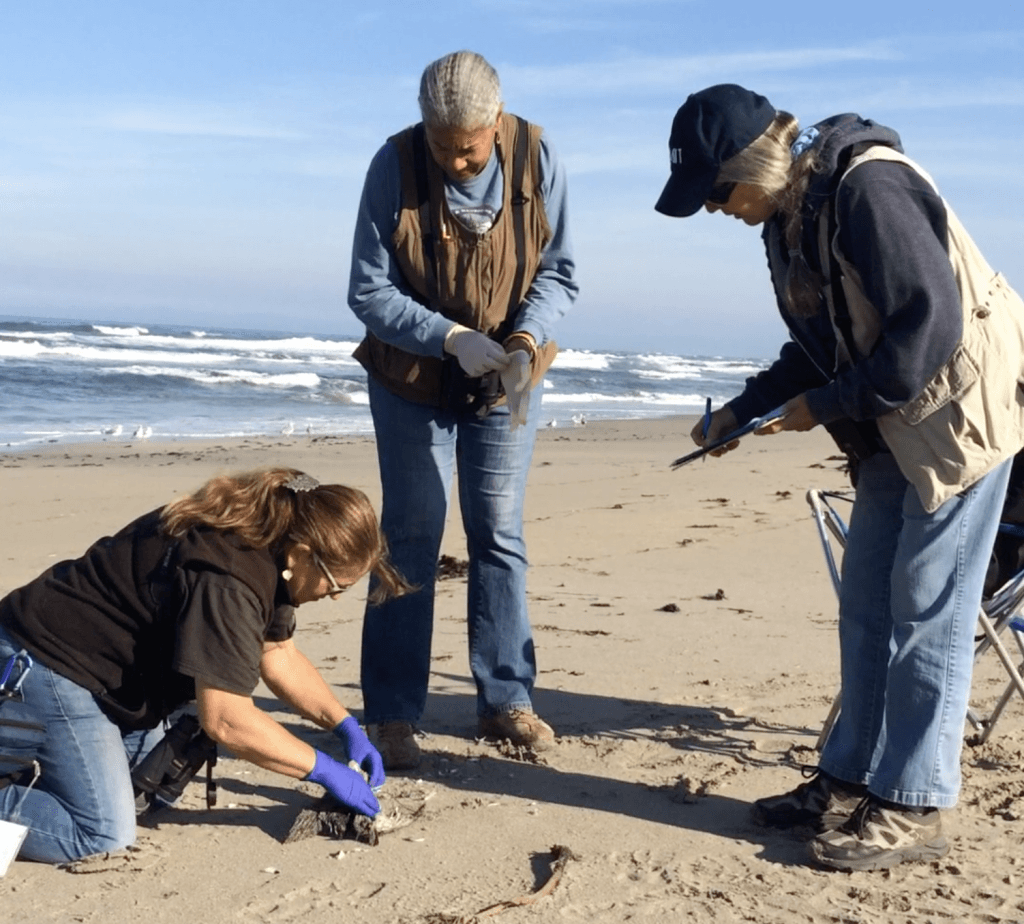In 2014, Julia Parrish, COASST’s executive director, was looking to expand the program farther down into northern California, in the Mendocino area. An Audubon chapter there was discussing the possibility—they liked it very much—and so one of their more involved volunteers was asked to meet with Julia when she came to visit.
“That was how I met her,” says Charlene McAllister, now a COASST volunteer, “and then it just kind of took off.”
A nurse by profession, Charlene had been involved with birds in a variety of ways for years. There were the weekly shorebird surveys (“I’ve been doing those for about seven years”), the black oystercatcher breeding surveys, the Christmas bird counts. So, really, what was one more bird-centered pursuit? Granted, it was walking the beach and looking for dead birds, but that was hardly dissuasive.
“Being a nurse, I’ve been around death before,” Charlene says. “I know that death is a part of life.” The question for her hinged on knowing to the greatest extent possible whether the dead birds were normal, or indicators that something big and abnormal was afoot. “That’s what makes finding out how the birds died so important,” she says.
Indeed, Charlene has lived on the Pacific coast long enough to know it is in the midst of some big changes. She grew up in Humboldt County, and went to high school in Crescent City, about an hour north of where she surveys now. Then as now, she spent a lot of time on the ocean, and could often be found at the beach at least three days a week. “I was a real tidepooler,” she says.
Charlene has surveyed a few beaches in her four years with COASST, but the one she has done most consistently is, as she says, a “very, very popular beach” called Virgin Creek. The section is named for the creek that emerges from the woods and sometimes flows all the way to the ocean, or sometimes does not, depending on the season. A typical survey has her meeting up with her partner, and then they gossip all the way down to the water. They mark off their zones, and then start walking. As a pair they sometimes dawdle a bit, take in the living birds, enjoy the sand. “You’re on the beach, after all,” she says.
But that does not distract her from her larger purpose. “I think citizen science is really important,” Charlene says. Given the size of the world, the challenges facing it, there is simply no way for scientists themselves to collect everything in this day and age. (“Even with interns,” Charlene adds.) But what is really important is that COASST is opening the eyes of people who might not have thought that going out to the beach and handling dead birds was something they might want to do. Around Mendocino, there is a volunteer who is a first grade teacher, and she is so excited she can share the things she learns on the beach with her students. And there are all the people who stop to see what she is doing, and when she tells them, ask her why.
“It’s critical,” Charlene says, “to use citizen science not just to gather data, but also to reach a larger audience.”


